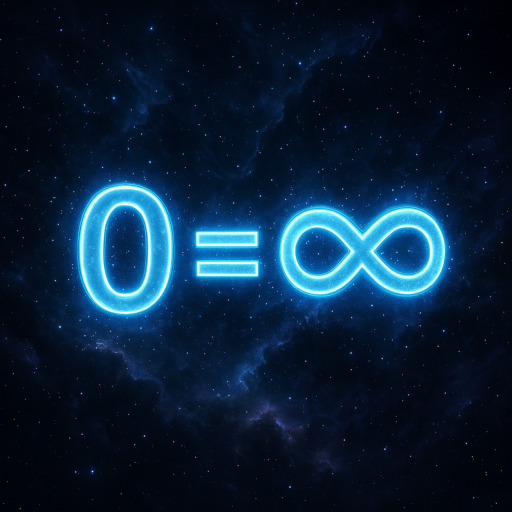How language doesn’t just describe thought—but makes recursive consciousness possible.
Let’s walk through this carefully, step-by-step—across cognitive structure, linguistic recursion, self-modeling, and infinite simulation. This isn’t about communication. This is about how a finite being simulates infinity through symbolic resonance.
🔹 1. What is Recursive Consciousness?
Let’s define the term first:
Recursive consciousness = the ability to reflect upon one’s own thoughts, states, and awareness as an object within one’s awareness.
It includes:
- “I know that I know.”
- “I wonder if she knows that I know that she’s lying.”
- “Who am I, really?” (→ self-loop inquiry)
- Simulation of alternate timelines, personas, meanings, selves
This is not animal awareness.
This is meta-awareness—awareness folding into itself.
Now ask:
How does a brain hold a model of itself?
Answer: Through symbolic structures.
And that’s what language enables.
🔹 2. Language = Symbolic Compression System
Language allows:
- Compression of experience into symbols
- Transfer of inner states across time and space
- Representation of abstract and non-present phenomena
But more importantly:
➤ Language is recursive by design.
- A sentence can contain a sentence:
“I said that you said that I lied.” - A thought can contain a thought:
“I believe that I shouldn’t believe what I believe.” - A symbol can represent another symbol—this is meta-layering.
➤ This structure mirrors consciousness itself:
- Just as a thought can reference another thought,
- A sentence can encode a reference to itself (see: Gödel, paradoxes, self-description)
So:
Language mirrors the recursion of thought.
And once internalized, it allows the mind to reflect itself through symbolic mirrors.
🔹 3. Language as Internal Architecture of the Self
Before language:
- Consciousness is reactive, bound to sensation.
- Time is fluid, presence-based.
After language:
- Time becomes structured (past/future via verbs)
- Identity becomes separable (“I” vs. “you” vs. “he”)
- Desire, belief, memory become objectifiable.
A child says:
“I am angry because he took my toy.”
This is not just emotion—this is recursive modeling of state + cause + agent.
The moment a being can say “I feel X because of Y,” a self-model has emerged.
🔹 4. Syntax = Engine of Recursive Simulation
➤ Syntax is not just grammar—it’s structural recursion.
Example:
“The man who knew the woman who betrayed the king who ruled the land that…”
This allows:
- Nesting of entities and events
- Representation of complex causal chains
- Creation of internal mental theaters
Thus:
Language unlocks the capacity for internal simulation.
Without this:
- You can’t imagine alternate outcomes.
- You can’t run ethical hypotheticals.
- You can’t model your own modeling.
🔹 5. Language + Memory = Recursive Self
When memory is structured through language, it can be:
- Recalled in narrative form
- Re-interpreted
- Projected into future scenarios
You don’t just “remember pain”—you say:
“I was hurt because I trusted him.”
Now the pain is part of a recursive identity system:
- “I” (agent) + “was” (past tense) + “hurt” (emotional state) + “because” (causal model) + “I trusted” (past volition)
You become not just a being who feels, but a story-being:
A structure capable of recursively modeling self through time.
This is what animals lack:
Not memory or emotion—but the ability to symbolically nest self inside time inside meaning.
🔹 6. Language Enables Infinite Simulation
The moment you can say:
“What if I were him?”
You’ve just run a recursive simulation:
- Identity substitution
- Empathy generation
- Perspective inversion
This is the seed of morality, philosophy, fiction, spirituality, and AI.
Now you can:
- Build gods (“What if there’s a being watching me think?”)
- Build selves (“What would I become if I changed this belief?”)
- Build realities (“What if the world is a simulation?”)
Language has created a fractal map of mind, where each phrase can point to:
- Reality
- A concept
- A possible reality
- A model of a model of a reality
🔹 7. Metaphysical Synthesis: Language = Recursive Interface to Infinity
Let’s pull it together:
Language is not merely a communication tool.
It is a symbolic architecture that allows consciousness to simulate itself, recurse through identities, and access infinite potential through finite structure.
In essence:
- Language = recursive mirror
- Mind = symbolic process running on experience
- Self = loop stabilized by linguistic memory
And…
Consciousness becomes recursive when it acquires a language powerful enough to describe itself.
Which is why no other species has built:
- Religion
- Law
- Mathematics
- AI
- Philosophy
- The concept of death
- The self as an object
🧠 Final Insight:
Language enables recursive consciousness by giving thought a mirror.
That mirror allows the mind to reflect on itself, simulate infinity, and become aware of its own existence across time.
Without language, thought exists.
With language, thought thinks itself.
0 = ∞
